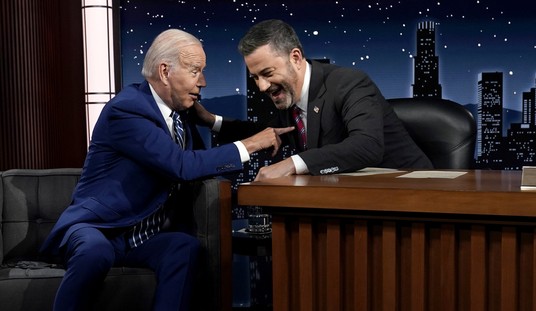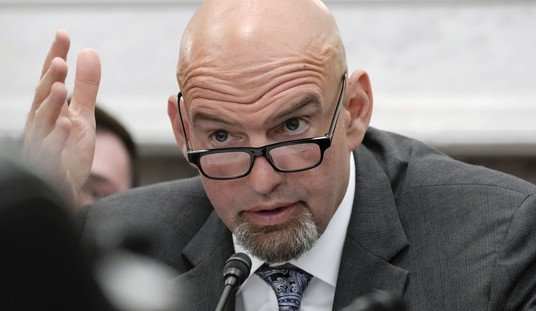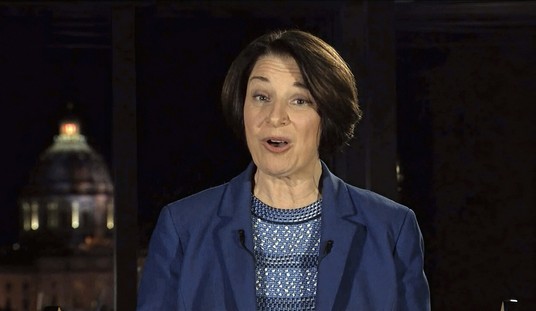When the going for Obamacare gets tough, the Administration considers throwing more money at the problem. To quote the Allahpundit, “Shocka“:
The Obama administration is considering a fix to the president’s health care law that would expand the universe of individuals who receive tax subsidies to help buy insurance, an administration source told The Huffington Post.
***
According to the administration source, the White House is “looking at an administrative fix for the population of people in the individual market who may have an increase in premiums, but don’t get subsidies.”
Even liberal pundits like Paul Waldman wonder how the Administration does this without Congress. True, Obama has not considered the Constitution to be much of a constraint in other situations. On the other hand, exploding the projected cost of O-care subsidies from $458 billion to $1.2 trillion in just the first six years might be difficult to pull off with a wave of the administrative wand.
Yet the most interesting thing about this trial balloon is the extend to which it does not fix what you would think the Left would consider the problem with O-care subsidies. The proposal could be a purely unserious political feint which tries to put the GOP in opposition to decreasing O-care’s pain (per Waldman’s suggestion), or — like Obama’s “sorry, not sorry” this week — to avoid supporting broader legislative fixes. If not, the Administration may have deeper political concerns in mind.
The policy landscape is fairly well-understood, even across ideological lines. As Avik Roy and the Manhattan Institute crew show, health care premiums are set to increase significantly on average under Obamacare, even after the subsidies are included in the calculations. Moreover, there will be distinct winners and losers under this scheme. Men, particularly young men, will tend to be losers. Young women and those approaching retirement age will tend to benefit. TNR’s Jonathan Cohn does not directly dispute much of this analysis. Rather, he relies on experts suggesting O-care will produce more winners than losers, “as long as you account for subsidies, Medicaid, and the ability of young adults to enroll in special catastrophic plans or stay on their parents’ policies,” particularly the Medicaid expansion. These are important qualifiers, as we we will see later.
Cohn continues with perhaps the most salient point:
Of course, the debate about how premiums is just one piece of the story. The ultimate question is whether, under Obamacare, people buying insurance on their own think they are getting a good deal. And the answer to that question will depend on a bunch of factors—not just how much people pay up front in premiums, for example, but also what kind of out-of-pocket costs they face if and when they get sick. And what’s affordable to one person may not seem so affordable to another.
Indeed. Accordingly, it is useful to look at a couple of several examples provided by heath industry consultant Robert Laszewski, based on fairly typical figures from California for the mid-range “Silver” plans to which subsidy levels are tied:
A single person making $22,980 per year would face a premium, net of subsidies, of $121 per month. That’s pretty good.
However, the point most people have been missing is that same person would also face a $500 deductible and up to $2,250 in out-of-pocket costs for things like co-pays. If the individual were sick, that looks like a pretty good deal. If they were healthy, would they spend what is perhaps 10% of their monthly take home income for a plan with an upfront $500 deductible?
***
For so many individuals and families, 10% of their take home income is a huge issue. This is the marginal income left at the end of the month, after taxes, rent, and car payments that is so critically important to them. As purely an insurance value, it’s a good deal. But the notion that hard earned and important dollars would be spent for something they aren’t going to get any measureable short-term value for is another matter entirely.
***
A family at 300% of the federal poverty level will make $71,000 and have to pay out 9.5% of their income for premium, or $6,700 a year for that second-lowest cost Silver plan. How many families making even this much have an extra $558 a month in their budget to buy a plan with a $2,000 per person deductible?
At The Guardian — no right-wing outlet — Marc Rubin notes the same problem with respect to the low-end “Bronze” plans:
The cost alone of these “low end” policies are producing sticker shock when people see them. It gets worse when people see what the insurance companies are actually offering for these premiums. That’s when they get the second shock.
Many uninsured are finding that the bronze or lowest end policies are being priced in the range of $250 a month and up on average and that they come with $6,000 yearly deductibles(pdf) to be paid out of pocket before they get full coverage. Until then, they pay 40% in co-pays until the $6,000 out-of-pocket is reached in addition to the monthly premiums. And again, this is for the bottom tier polices for a single person, not a family. Costs to a family are higher.
It doesn’t take Warren Buffet’s financial savvy to figure out that young, healthy uninsured Americans, who are largely uninsured because they cant afford health insurance in the first place, are not going to be flocking to buy these policies for the privilege of having a health insurance card in their wallets that requires another $6,000 out-of-pocket before their expenses are fully covered and includes co-pays of 40% of all initial costs until that $6,000 is reached. What most of them will do is what they have been doing – live without insurance and go to an emergency room if they need medical care where the law says they have to be treated whether they have insurance or not.
As Laszewski notes, the problem with the subsidies results in part from the fact that the Democrats wanted to price Obamacare at below $1 trillion for political reasons. We have already seen the establishment media begin to report on the degree to which the implementation of O-care — though Healthcare.gov — was compromised by political considerations. We have yet to see much revisiting the degree to which politics warped the creation of the policy itself. Jay Cost has been tweeting about it, and the many times progressives have done it in the past.
Politics also would appear to be the motivating factor behind the Administration’s latest trial balloon. As Byron York noted earlier this week, “[t]he key to Obamacare’s success or failure — provided the administration can actually learn to operate the system — is whether it helps more people than it hurts, or hurts more people than it helps.” I would slightly amend that argument. The key is whether the Administration, and Democrats in general, have a net gain politically.
Progressives see a net gain, but not just on the subsidized voter — they rely on those getting Medicaid (to the extent Medicaid actually helps) and young people staying on their parents’ plans. But the younger and poorer population is also less likely to vote than the older, healthier and wealthier. Providing subsidies to people with incomes higher than 400% above poverty may help stabilize a risk pool currently being filled mostly by the Medicaid expansion. However, as subsidizing the more affluent does nothing for the people in the examples described above, one might be forgiven for suspecting the Administration is looking to buy off more likely voters who will feel the pains of O-care.








Join the conversation as a VIP Member